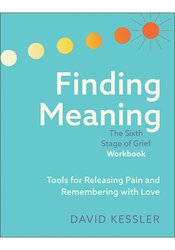6 Practices for Grieving Clients Suffering from Loss

As a grief therapist, you witness firsthand how complex and varied the grieving process can be. Each client brings a unique narrative of loss, shaped by personal history, cultural values, and individual coping mechanisms. In a profession where no two stories of grief are alike, it becomes essential to continually deepen your understanding of how loss manifests—emotionally, mentally, and even physically—in those you support.
Whether you’re working with clients navigating the immediate aftermath of a loss or supporting those dealing with long-term grief, there are certain strategies and tools that can help you provide insightful ideas to those in all stages of loss, as grief is ever-changing, so you can cultivate an practice where healing is not about closure but about learning to coexist with loss—helping clients rebuild, rediscover, and ultimately grow through their grief.
Help your clients further their healing journey with this printable infographic designed to help your grieving clients find meaning and provide new ways to endure and grow from loss.
Whether you’re working with clients navigating the immediate aftermath of a loss or supporting those dealing with long-term grief, there are certain strategies and tools that can help you provide insightful ideas to those in all stages of loss, as grief is ever-changing, so you can cultivate an practice where healing is not about closure but about learning to coexist with loss—helping clients rebuild, rediscover, and ultimately grow through their grief.
There is grace in denial.
It is nature’s way of letting in only what we can handle. Denial, often misunderstood as avoidance, can serve as a powerful and compassionate defense. In the early stages of grief, denial acts as a buffer—a protective mechanism that shields us from the full weight of the loss until we are ready to confront it. There is grace in this process, as it allows the mind and heart to absorb only what they can handle in manageable waves. Rather than rushing towards acceptance, denial slows the emotional flood, offering moments of reprieve. It is the body’s way of saying, “Not yet,” giving clients the time and space to gather strength, process in small steps, and gradually build the resilience necessary to face the deeper layers of their grief.Those who grieve well, live well.
In grief, you don’t need to be fixed because you are not broken. It’s important to help clients recognize that grief is not their enemy, it’s a natural response to loss. Those who grieve well and allow themselves to experience the full spectrum of emotions without shame are often the ones who find the most meaningful paths forward. The therapeutic goal is not to “fix” clients because they are not broken; grief is not something to be cured but something to be honored and integrated. When you shift the focus from fixing to supporting, you empower clients to embrace their emotions, find meaning in loss, and live life more fully, even in the presence of grief. This approach invites a perspective where healing is not about erasing pain but about learning how to live well alongside it. This approach resonates deeply with those who fear that experiencing happiness again might feel like a betrayal or signify forgetting their loved one.The grief is there to heal the pain.
You don’t run from grief, you actually run from the pain of loss. Grief has been given to us to heal the pain. As therapists, it's essential to help clients understand that grief is not the enemy. It is the body and mind’s natural way of healing the pain of loss. Oftentimes, what clients fear isn’t the grief itself but rather the overwhelming pain that accompanies it. By learning how to lean into grief, rather than running from it, clients open the door to gradual healing. The process of grieving provides a safe space for processing emotions, making meaning, and reconnecting with life in new ways. It is not something to be fixed or bypassed but rather a blessing in disguise that allows the pain of loss to transform over time.Grief is a time of reimagining, renewal, and rebuilding.
Encouraging clients to experience something new, even in small ways, can be a powerful therapeutic tool. Exploring a new adventure, a different type of food, a song they’ve never heard, or a change in style can spark moments of openness and curiosity. These seemingly minor actions can help foster a sense of possibility, reminding clients that life, while forever changed, still holds room for growth and joy. Inviting grievers to embrace new experiences, no matter how small, allows them to rebuild their lives at their own pace, one step at a time.Your grief is unique because your loss reflects a unique love you experienced.
It’s important to remind clients that their grief is as unique as the love they shared with the person they lost. No one else can fully understand their grief because no one else experienced that love in the exact same way. This uniqueness means that their healing journey will also be deeply personal, unfolding in its own time and form. Encouraging clients to reconnect with the love they carry—just for themselves—can provide comfort and meaning amidst the pain. By focusing on that love, they can honor both their connection and their healing, allowing space for both sorrow and gratitude to coexist.Meaning in loss may come in time, it can’t be rushed or found.
Helping clients understand that meaning in loss is not something that can be rushed is essential in their journey through grief. Healing is something that unfolds gradually, on its own time, and the search for meaning is a deeply personal journey that cannot be forced. As therapists, it is our job to encourage clients to be patient with themselves, allowing space for their emotions to evolve naturally. By shifting the focus from immediate answers to the gentle hope of eventual peace, we foster an environment where clients can trust the process. Today, even the smallest step—such as holding space for the possibility of peace—can be a meaningful part of that journey.Help your clients further their healing journey with this printable infographic designed to help your grieving clients find meaning and provide new ways to endure and grow from loss.
Finding Meaning:
The Sixth Stage of Grief Workbook: Tools for Releasing Pain and Remembering with Love
The Sixth Stage of Grief Workbook: Tools for Releasing Pain and Remembering with Love

International grief expert and noted author David Kessler has spent decades working with thousands of people experiencing the depths of their grief. He knows the pain deeply, personally. And he also knows the path to begin to find hope, and healing, again. And it is in that love where you can find meaning.
Written with warmth, sensitivity, and unique insight, you’ll feel like you are sitting with David, having a conversation along your path to healing. This workbook is filled with self-reflective exercises, journaling opportunities and warmhearted guidance for your clients to navigate their grief journey.
Written with warmth, sensitivity, and unique insight, you’ll feel like you are sitting with David, having a conversation along your path to healing. This workbook is filled with self-reflective exercises, journaling opportunities and warmhearted guidance for your clients to navigate their grief journey.
David Kessler on Grief Healing for Mind, Body and Spirit

Join renowned grief expert David Kessler and learn to heal grief with mind-body techniques that combine breathwork, movement, sound, yoga, and more. Gain skills that will help your clients to find acceptance, resolve guilt, overcome triggers, shame, and more. PLUS, get bonus content on addiction, preserving memories, and more!
Meet the Expert:
David Kessler is one of the world’s foremost experts on grief and loss. His experience with thousands of people on the edge of life and death has taught him the secrets to living a happy and fulfilled life, even after life’s tragedies.
He is the author of six books, including his latest bestselling book, Finding Meaning: The Sixth Stage of Grief. He co-authored two books with Elisabeth Kubler Ross, Life Lessons and On Grief and Grieving, updating her 5 stages for grief. He also co-wrote You Can Heal Your Heart with Louise Hay. He authored Visions, Trips, and Crowded Rooms: Who and What You See Before You Die. His first book, The Needs of The Dying, received praise from Saint (Mother) Teresa.
Learn more about his educational products, including upcoming live seminars, by clicking here.
He is the author of six books, including his latest bestselling book, Finding Meaning: The Sixth Stage of Grief. He co-authored two books with Elisabeth Kubler Ross, Life Lessons and On Grief and Grieving, updating her 5 stages for grief. He also co-wrote You Can Heal Your Heart with Louise Hay. He authored Visions, Trips, and Crowded Rooms: Who and What You See Before You Die. His first book, The Needs of The Dying, received praise from Saint (Mother) Teresa.
Learn more about his educational products, including upcoming live seminars, by clicking here.




